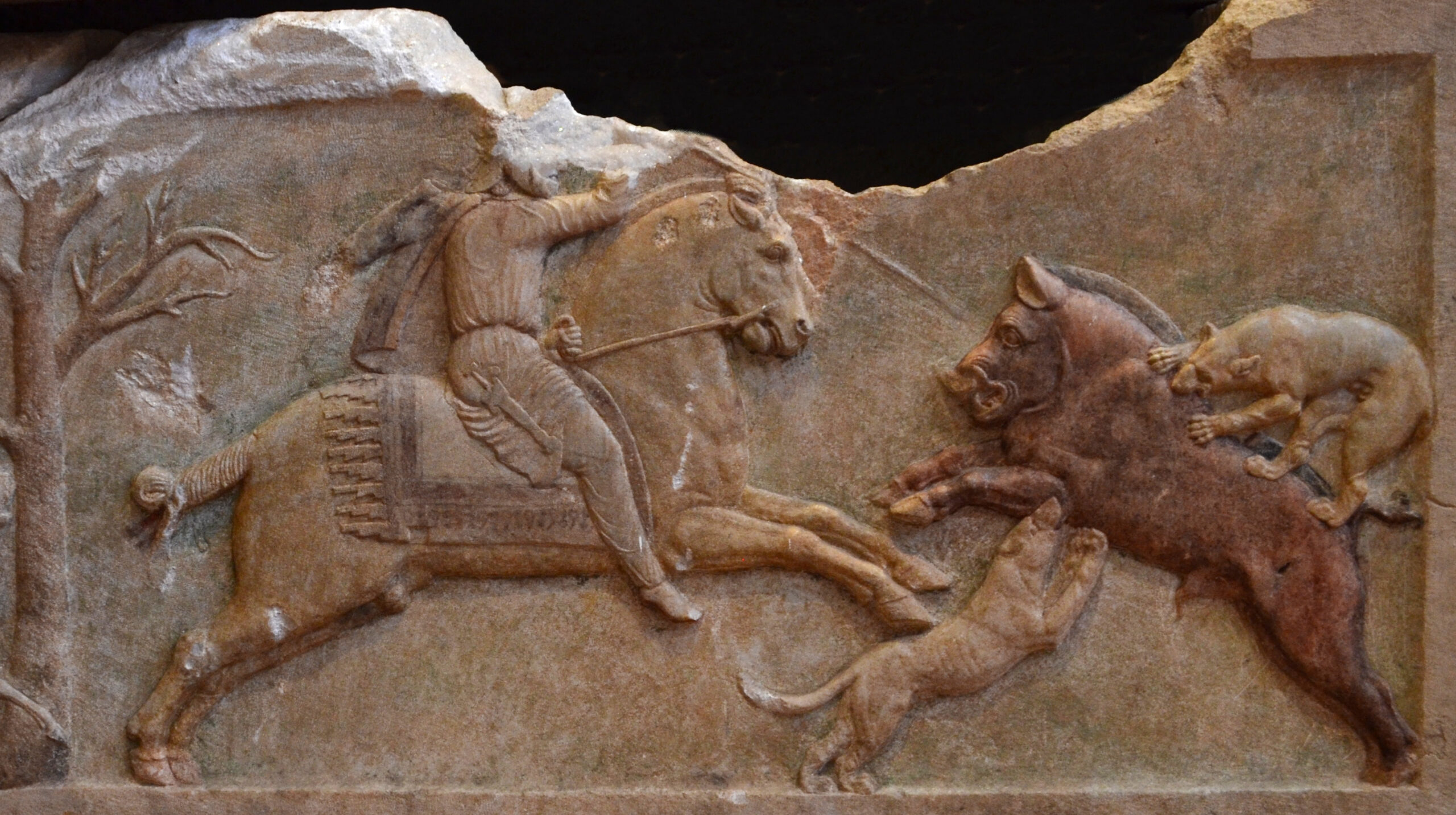Well it’s the season of ‘la battue’ in the forests behind my house in Eastern France, with weekends full of hopeful orange roly-poly men harassing the local dwindling population of puny wild boar. And impinging upon my meditative walks. Not a fan.
But I am intrigued by this late 4th century B.C. sarcophagus from the Troad showing a rather more heroic hunt. The sarcophagus was found during road works near Çannakale, part of a local tradition (I suppose) of fabulous stone sarcs in bas-relief there (e.g. the one showing the sacrifice of Polyxena made two centuries earlier).

This corner shows a mounted hunter bearing down on a rearing male boar (nothing puny here!), beset by hounds. The man’s leggings and traces of headgear place him in the Persian tradition (Greek tunics would have ended mid-thigh, ooh la la), highlighting the multiculturalism in Asia Minor’s ruling elite in the decades after Alexander the Great’s conquests.
I’ve long been fascinated in the ways in which elite Persian hunts (particularly lion hunts in stocked ‘paradisoi’) influenced royal Macedonian practices and self representation during the course of the 4th century. But here I wonder whether some cross-pollination the other direction might be occurring. (Of special note the dead tree, that peculiar motif occurring also in the Vergina hunting frieze and Alexander sarcophagus.)
Because while the lion hunt certainly was an East to West affectation, the boar was the traditional quarry of Macedonian youths, with a successful kill marking the transition to adulthood and the right to recline at the symposium. Thoughts?




